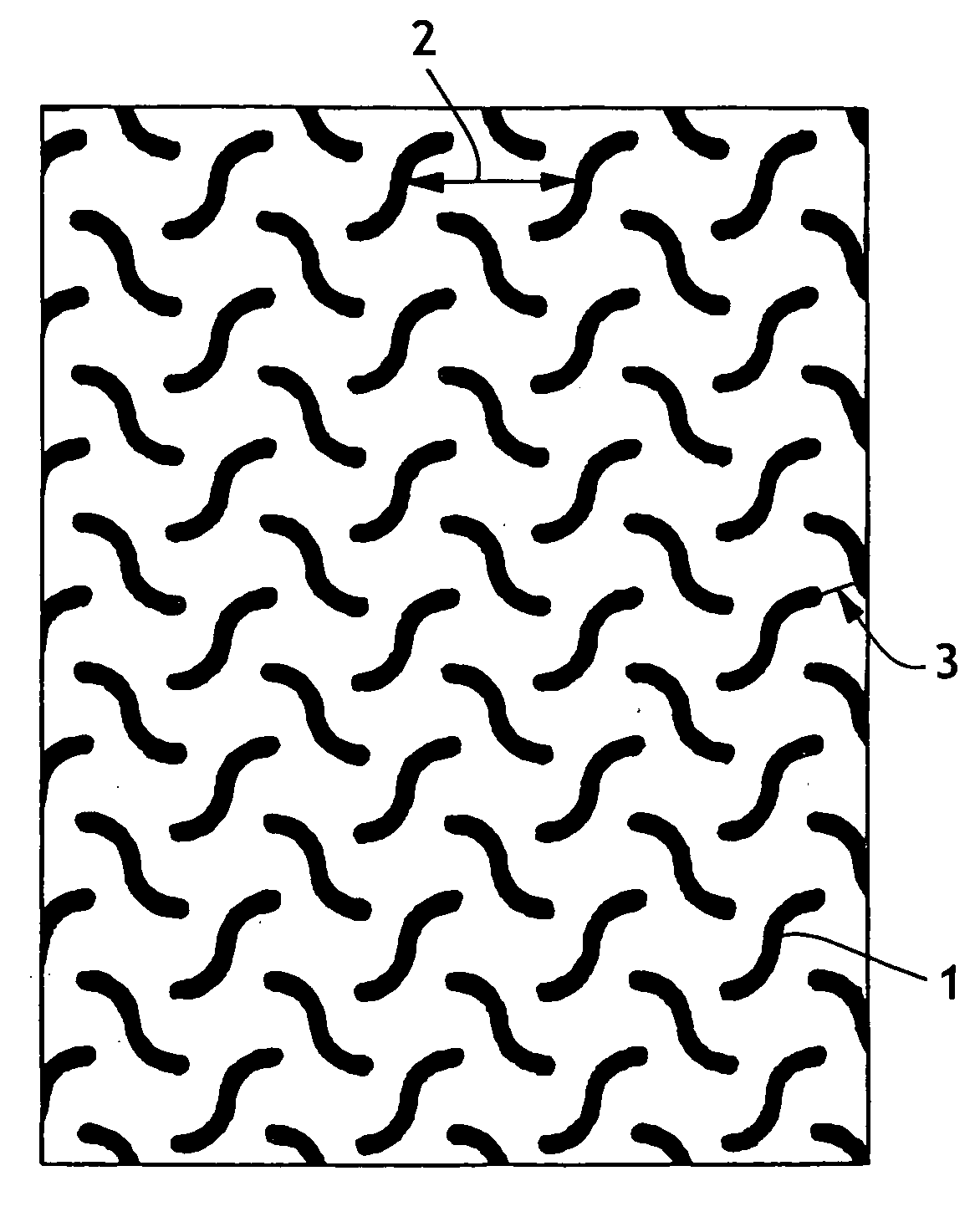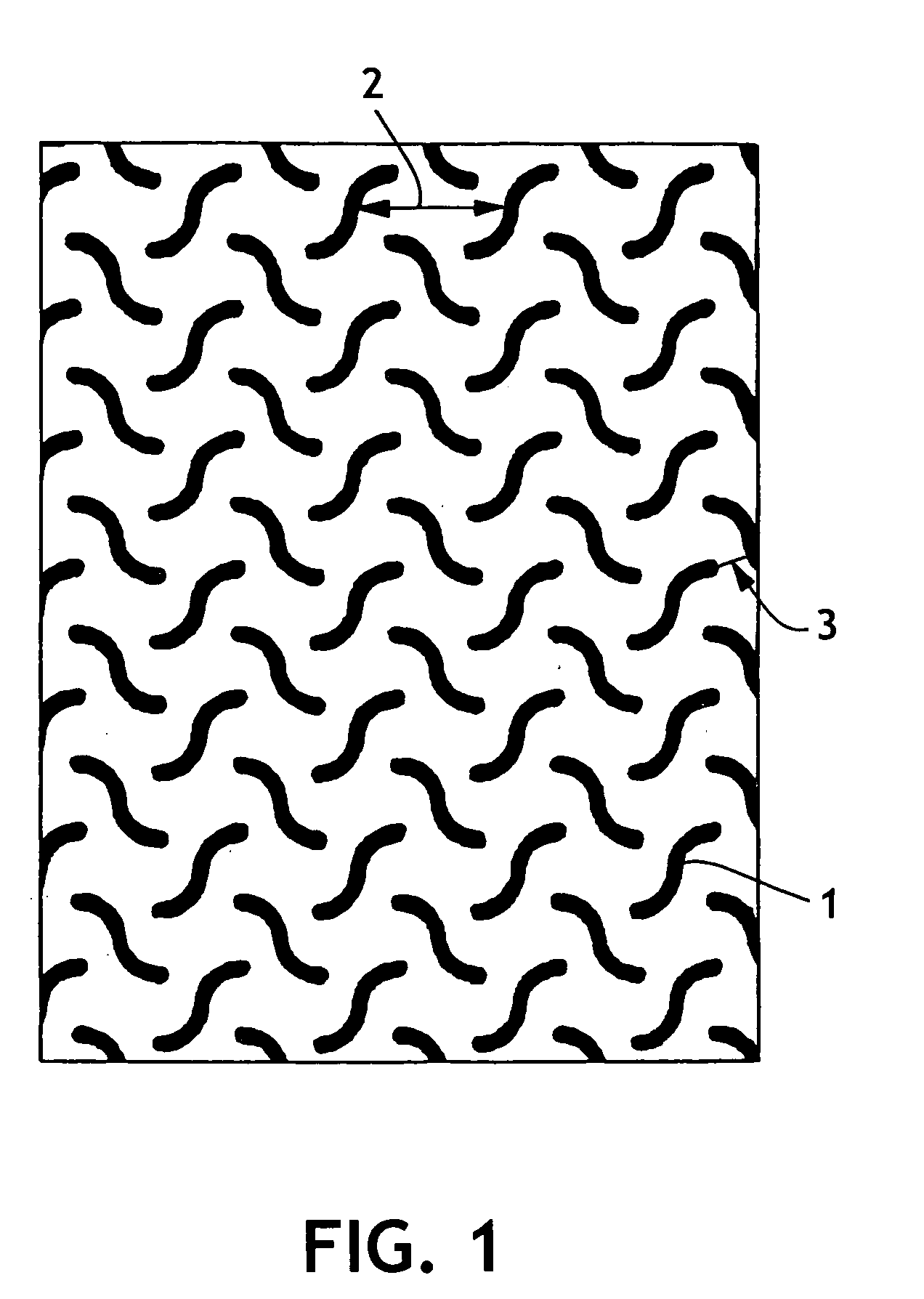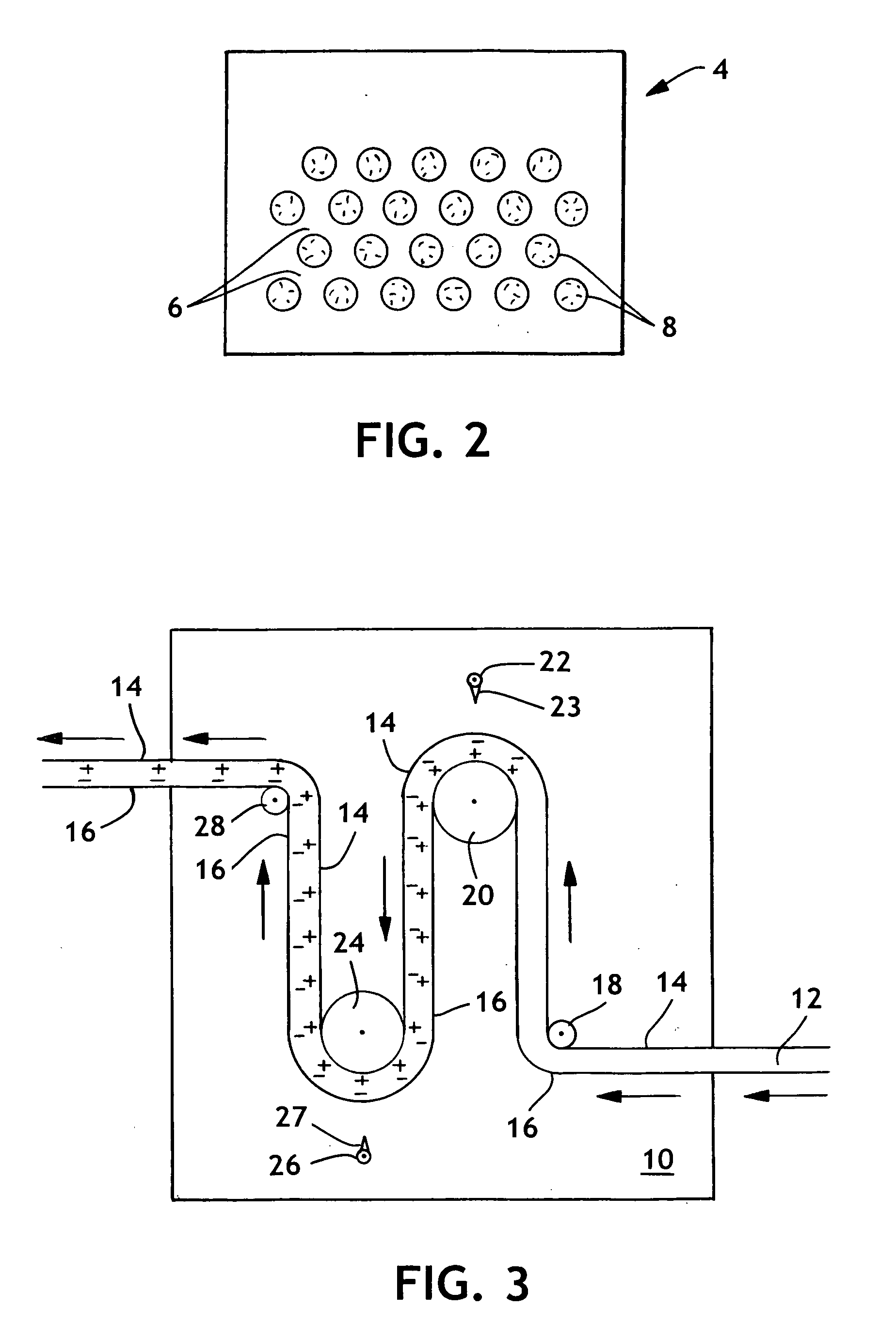Bacteria removing wipe
- Summary
- Abstract
- Description
- Claims
- Application Information
AI Technical Summary
Benefits of technology
Problems solved by technology
Method used
Image
Examples
experiment 1
Bacterial Growth Inhibition Test
[0050] The Kymene® class of chemicals are generally mild and not caustic to the skin. Certain of the Kymene® chemicals, however, are known to kill bacteria at some level. In order to determine whether the Kymene® treatment chemicals will escape from a wipe and perhaps kill the bacteria remaining on a surface, an assay was designed to measure the inhibition in bacterial cell growth of chemical leached from the treated materials. This assay procedure follows.
[0051] Two by two inch (5 by 5 cm) squares of treated and untreated materials were placed in 15 mL tubes containing 5 mL of sterile phosphate-buffered saline (PBS) solution. The tubes were placed in a shaking incubator at 37° C. for 2-3 hours. One milliliter of each solution was then transferred into a clean culture tube. Ampicillin-resistant E. Coli was added (10 microL, ˜1000 cells) to each tube. Sterile PBS was added to clean culture tubes as controls. The tubes were returned to the shaking inc...
experiment 2
Bacterial Growth Inhibition Test
[0055] Snowtex® nanoparticles and aluminum oligomer were tested directly on E. Coli. Serial dilutions of both Snowtex® nanoparticles as well as the aluminum oligomer used to coat the nanoparticles were made in sterile PBS. One milliliter of each solution was added to a clean culture tube in duplicate. Sterile PBS was added to culture tubes as a control. Ampicillin-resistant E. Coli was added (10 microL, ˜1000 cells) to each solution. The culture tubes were placed in the 37° C. shaking incubator for 30 minutes. After the incubation, one hundred microliters were removed from each tube and plated onto LB agar plates containing ampicillin. Plates were incubated at 37° C., and bacterial colonies were counted the following day to determine if Snowtex® nanoparticles or the aluminum oligomer inhibited colony formation. Data are listed in terms of the percent of colonies found on the plate compared to the PBS control.
Snowtex ® AKPercent ofPercent ofnanopart...
experiment 3
Method of Testing the Efficiency of Binding Bacteria
[0057] Not only must the successful treatment not kill substantial numbers of bacteria, it must also bind a large proportion of bacteria. In order to determine how efficient the wipe and treatment were in holding bacteria cleaned from the surface, the following test procedure was carried out.
[0058] Two by two inch (5 by 5 cm) squares of materials were cut and weighed in duplicate. Serial dilutions of an ampicillin-resistant E. Coli solution were made to achieve a final concentration of ˜105 cells per mL. One hundred microliters of sterile PBS were added to each material. After 5 minutes, one hundred microliters of the bacteria solution were added onto each material. The materials were removed and placed into 10 mL of sterile PBS in 50 mL tubes. The tubes were sonicated (5 cycles of 30 seconds on, 30 seconds off) in a water bath to dislodge any bacteria that is not bound tightly to the material. One hundred microliters of the PBS ...
PUM
| Property | Measurement | Unit |
|---|---|---|
| weight percent | aaaaa | aaaaa |
| weight percent | aaaaa | aaaaa |
| weight percent | aaaaa | aaaaa |
Abstract
Description
Claims
Application Information
 Login to View More
Login to View More - R&D
- Intellectual Property
- Life Sciences
- Materials
- Tech Scout
- Unparalleled Data Quality
- Higher Quality Content
- 60% Fewer Hallucinations
Browse by: Latest US Patents, China's latest patents, Technical Efficacy Thesaurus, Application Domain, Technology Topic, Popular Technical Reports.
© 2025 PatSnap. All rights reserved.Legal|Privacy policy|Modern Slavery Act Transparency Statement|Sitemap|About US| Contact US: help@patsnap.com



